What Is the Air Quality Index?
The national index reports real-time air quality issues across the country.
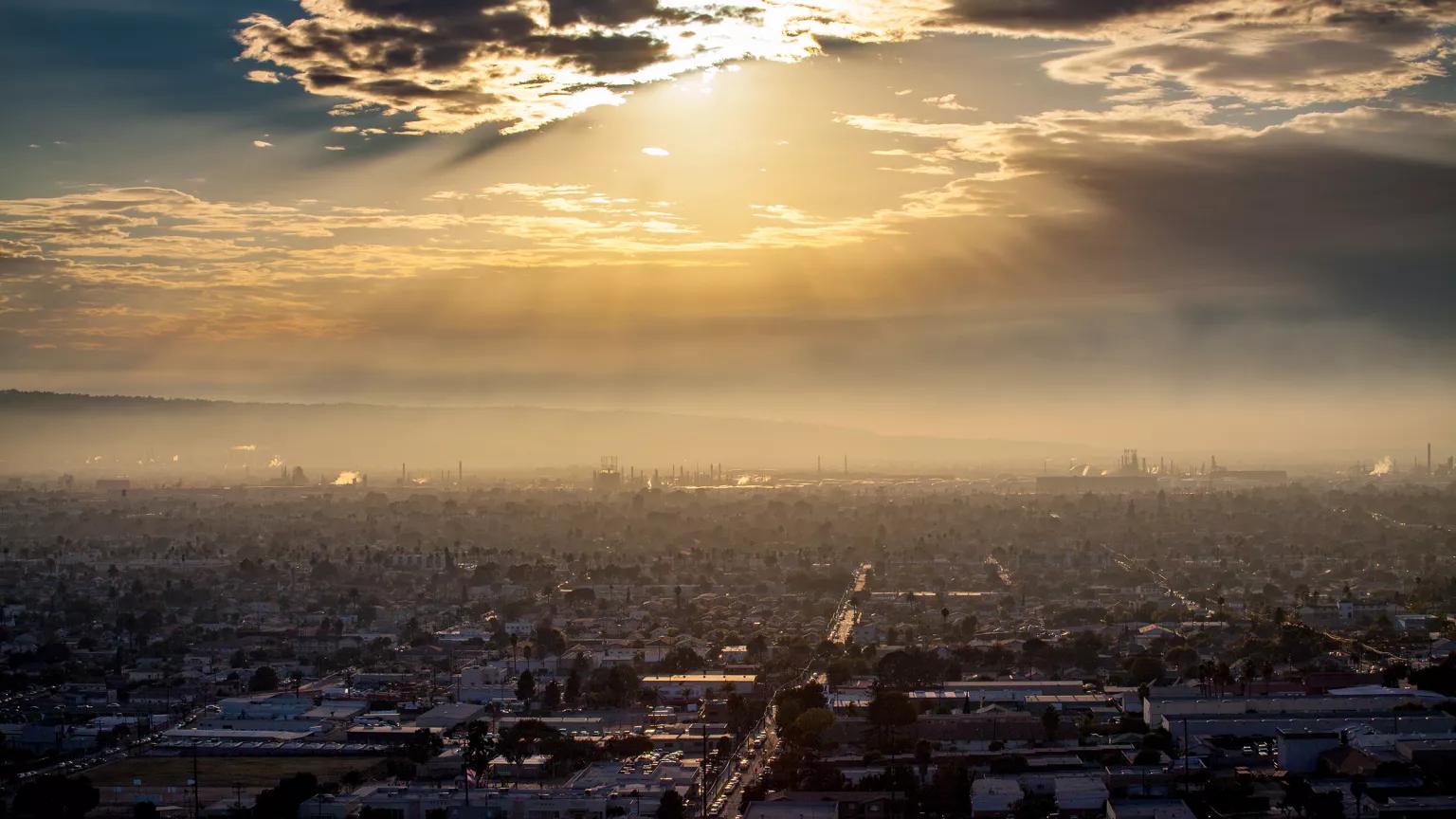
Smoggy air hanging over a neighborhood in Long Beach, California
Gary Kavanagh/Getty Images
Smoggy air and smoky skies can have a serious impact on your health. In fact, nearly 120 million Americans live in places with unhealthy levels of ozone and particle pollution, two of the most common air pollutants in the country. Not to mention, the last couple of summers have made it clear that the increase in wildfire activity, driven in part by climate change, is having a growing impact on what we breathe in. One way to protect yourself is to refer to the Air Quality Index (AQI). Here’s what to know about it, and what actions you can take when things look bad.
What is the Air Quality Index?
The AQI is a scale that provides real-time information on the amount of pollution in the air. The U.S. Environmental Protection Agency (EPA) developed the index as a way of reporting air quality issues directly to the public.
You can access the AQI on AirNow, a collaborative program of several government agencies, including the EPA, the National Weather Service, and Centers for Disease Control and Prevention, among other partners. There’s also an app you can download. (Note: People can use other sources outside of AirNow to check local air quality. PurpleAir is one; the crowd-sourced platform gets its data from a global network of 8,000 environmental sensors, many of them mounted on private homes.)
How do I read the AQI?
The scale is split into six categories, each with a color and a number corresponding to the amount of pollution in the air and its potential impact on public health. An AQI number above 100 means that a pollutant has gone beyond the national standard for that pollutant, set by the EPA. The higher the number, the greater the health risk.
If the AQI value exceeds 100, state and local agencies will put out an air quality alert to warn those who are most sensitive to pollution impacts. If the value is above 300, alerts will notify everyone in the affected area to be careful in these conditions. (In the United States, there have been about 40 instances in the last decade when the AQI reading went above 500, mostly in the West due to wildfire smoke.)
What does the AQI actually measure?
The index includes measurements of five major air pollutants that are regulated by the EPA to protect public health under the Clean Air Act:
- Carbon monoxide: An odorless, colorless gas that is released when something is burned, like gas from a stove. Other sources include wildfires and industrial facilities.
- Nitrogen dioxide: A reddish-brown, highly reactive gas coming primarily from the burning of fossil fuels, especially from vehicles and power plants.
- Ozone: A major part of the gnarly mix we call smog. This gas forms when two types of pollutants (nitrogen oxides and volatile organic compounds) react in the presence of sunlight.
- Particle pollution: Tiny airborne particles—PM2.5 and PM10—that are both emitted directly and formed in the atmosphere. Key sources include soot from cars, trucks, and power plants; dust from construction sites; and smoke from wildfires.
- Sulfur dioxide: A colorless gas that is emitted from the burning of fossil fuels in power plants and other industrial facilities.
The concentration of each of the five pollutants is measured hourly and/or daily—depending on the pollutant—via air monitors set up in about one-third of all counties in the country. An AQI value is calculated for each pollutant and whichever one has the highest value becomes the overall AQI for that period of time. For example, if the AQI value were 100 for ozone and 80 for particle pollution at noon in Manhattan, the number you’d see on AirNow for Manhattan would read as 100. Monitoring stations also use the data to forecast upcoming pollution levels and to provide AQI warnings regarding possible poor air quality the next day.
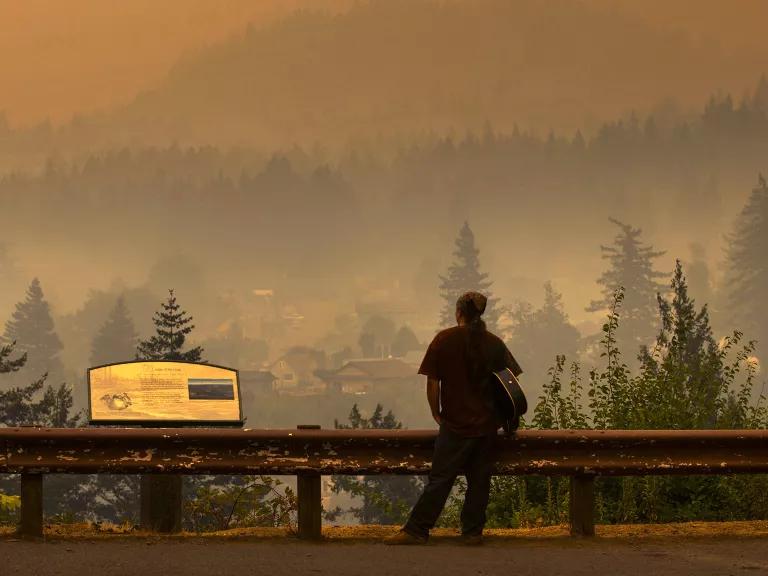
A resident who evacuated from wildfires in Cascade Locks, Oregon, on September 2020
Chris Pietsch/The Register-Guard via Associated Press
States are responsible for developing their own air quality monitoring plans, which determine where monitors are placed, how many there are, and what types are used. Cities with populations of more than 350,000 are required to report the AQI daily. Some smaller cities may still report the AQI as a public health service but won’t necessarily monitor every pollutant at every hour. If you don’t see an AQI for your area, it could be that there are no local monitors or that the nearby monitoring agency has opted out of submitting data to AirNow.
Are there any accuracy issues with the AQI?
For some communities, the AQI value may not reflect true conditions, particularly when monitors are not located near the places where pollution is most potent, such as in a city’s industrial corridors. This is especially worrying for low-income communities and people of color, who are more likely to live near highways and polluting facilities. An inaccurate AQI reading would further put these populations at risk.
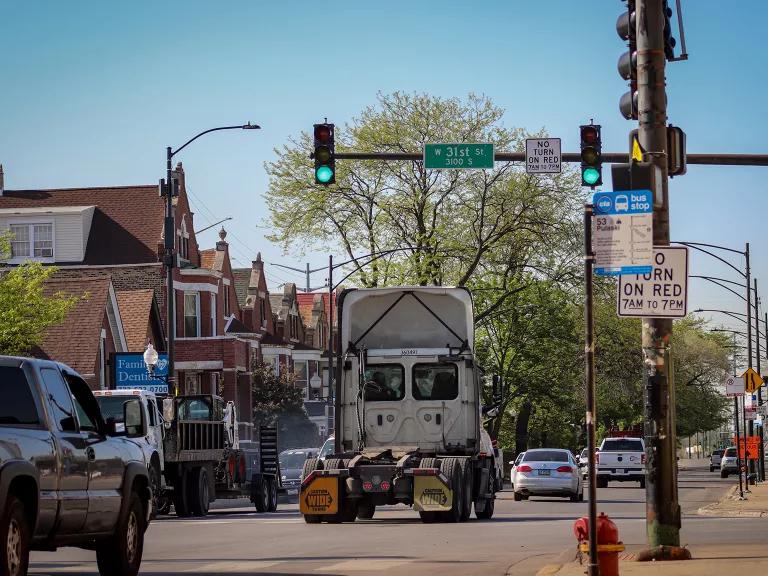
Diesel truck traffic in the Little Village neighborhood of Chicago
Karen Canales Salas for NRDC
Another issue is with the national standards for the pollutants themselves, notes Emily Davis, a senior attorney for NRDC’s Climate & Clean Energy Program who worked on the 2021 lawsuit that challenged the EPA over air pollution standards for ozone. Davis has called the EPA’s underlying guidance on ozone pollution out-of-date as well as out of sync with what health science considers harmful. The EPA’s outside scientific advisors have recommended strengthening national standards for ozone from 70 parts per billion (ppb), the current standard set in 2015, to between 55–60 ppb. But in August, the EPA announced that it will not continue its reconsideration of Trump-era ozone standards and will instead start over, with a full review to be completed by the end of 2025.
For fine particulate matter (PM2.5), the EPA’s current national standards are set at an annual average level of 12 micrograms per cubic meter (mcg/m3) and a daily level of 35 mcg/m3. In January 2023, the EPA proposed changing the annual standard to 9 or 10 mcg/m3 but didn’t plan for any changes to the daily level. While the proposal would be an improvement on the decade-old standards being used right now, it’s still well above the level that the World Health Organization recommends in its recently revised air quality guidelines: 5 mcg/m3. Updated EPA standards are expected in late fall.
So while it is still very important to check the AQI, keep in mind that the system isn’t perfect. Bottom line: If you feel unwell after going outside, listen to your body and stay indoors.
Why does air quality change from day to day?
Weather has a big impact on air quality. A sunny day, for example, can create higher levels of air pollution as sunlight reacts with certain pollutants that result in the formation of smog. On the other hand, a windy day may send air pollutants from one area to another, and rain can help (temporarily) wash away particulate matter. Hotter weather, particularly in summer months, can also lead to people cranking up air conditioners, and thus increasing energy use and power plant pollution. Basically, the more fossil fuels we burn, the more ozone, fine particles, and other pollutants enter our air. As global temperatures increase on the whole due to the climate crisis, smog-laden weather may become more and more common.
Wildfires, which are increasingly exacerbated by climate change, can cause a significant change in air quality for days on end. And the smoke from these fires can travel huge distances from the original source.
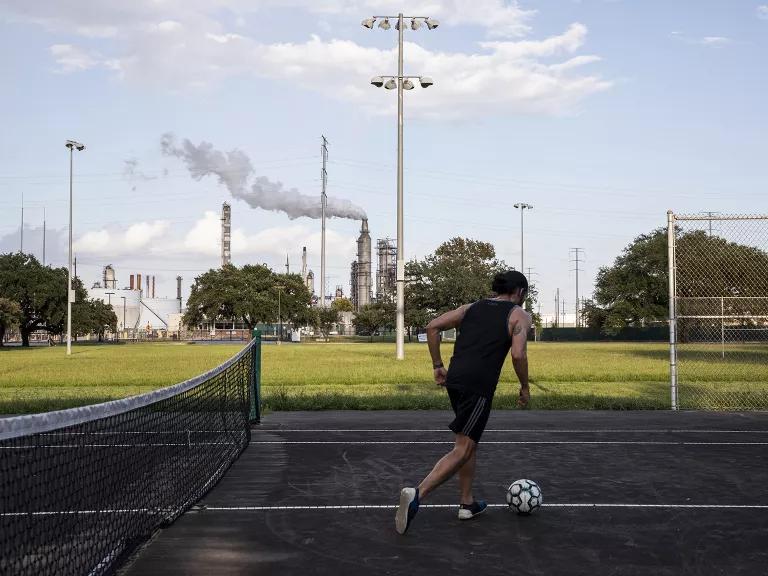
A park in the Harrisburg/Manchester neighborhood of Houston, located near the Valero oil refinery
Scott Dalton for NRDC
What are some of the harmful effects of poor air quality?
Health impacts from bad air quality can range from mild symptoms to serious health issues, depending on the length of exposure and type of pollutants, plus your age and any underlying health conditions. Mild symptoms can include coughing, itchy eyes, throat irritation, and feelings of tightness in your chest.
For those who are most vulnerable—like children, the elderly, outdoor workers, and those with pre-existing health conditions such as asthma and other lung ailments—both short-term and long-term exposure to air pollution can lead to serious health issues. Soot in particular is especially harmful, as the small particles can enter the bloodstream through the lungs and impact the major organs. Soot pollution has been linked to cardiovascular disease, cancer, and tissue damage. For those with asthma and allergies, exposure to smog can cause further breathing and cardiovascular problems. Even in otherwise healthy children and adults, ozone pollution can inflame and irritate airways.
How do I protect myself when air quality is bad?
There are a few standard things you can do any time you get an air quality alert.
If you are at home:
- Close all doors and windows.
- If you are running your window air conditioner, set it to “recirculation” so it stops pulling air from outside. Even with a central system (including split units anchored to walls)—which only circulates the air inside the house—you’ll still want to regularly change your filter to help pull any pollutants out of the indoor air.
- Consider purchasing an air purifier with a HEPA filter if you live in an area with frequent air quality problems, especially if you live with someone who is particularly vulnerable to air pollution.
If you have to go outdoors:
- Regularly check AirNow for air quality updates. The app can make it easier.
- Limit time outside to the extent possible.
- Wear an N95 mask that can filter out particulate matter when you are outside.
- Change out of your outdoor clothes as soon as you get home, since particulates can infiltrate the fabric and then later be inhaled.
If there is a major air quality issue in your area, you can report it to the EPA or to your state or local environmental agency. States are also required to review their monitoring plans every five years, so there are opportunities to bring attention to persistent air quality issues in an area that may not have monitors or where the AQI value does not properly reflect those issues.
This NRDC.org story is available for online republication by news media outlets or nonprofits under these conditions: The writer(s) must be credited with a byline; you must note prominently that the story was originally published by NRDC.org and link to the original; the story cannot be edited (beyond simple things such as grammar); you can’t resell the story in any form or grant republishing rights to other outlets; you can’t republish our material wholesale or automatically—you need to select stories individually; you can’t republish the photos or graphics on our site without specific permission; you should drop us a note to let us know when you’ve used one of our stories.


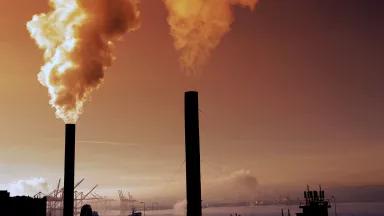
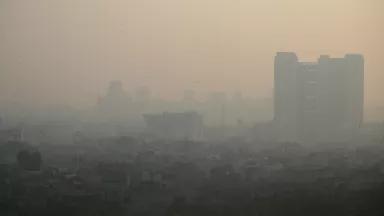

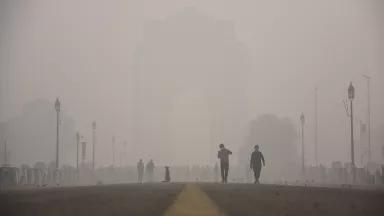
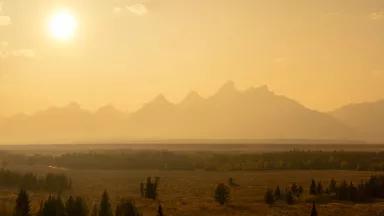
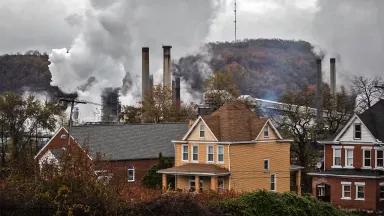
How to Become a Community Scientist
Public Health Scientist and Advocate
Clean Air Warrior